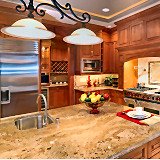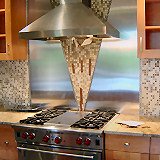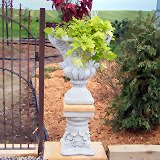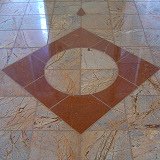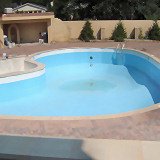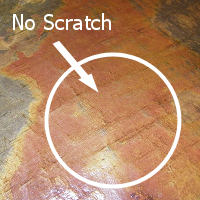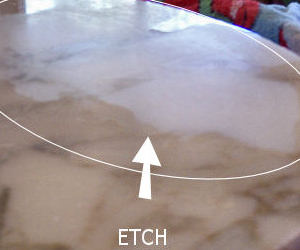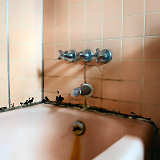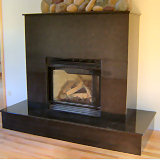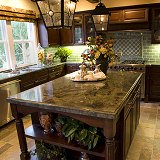 | |||||||||||||||||||||||||||||||||||||||||||||||||||||||||||||||||||||||||||||||||||||||||||||||||
|
| |||||||||||||||||||||||||||||||||||||||||||||||||||||||||||||||||||||||||||||||||||||||||||||||||
|
Loading
| |||||||||||||||||||||||||||||||||||||||||||||||||||||||||||||||||||||||||||||||||||||||||||||||||
Most Popular Marble And GraniteDaniel Pivko
Department of Geology and Paleontology, IntroductionThis publication presents the most-offered marble and granite dimension stones on the Internet which qualities are described in tables with an alphabetical order of natural stones. In the beginning there are The First Table presents about 150 of the world`s most popular commercial granites. About 100 of the world`s most popular commercial marbles are recorded in the Second Table. The Third Table shows the 50 most popular American-Canadian commercial marble and granite. The tables can help stone specialists, sellers, designers, architects, and their customers to orient in a jungle of stone commercial names and commercial and scientific stone types. The data is based on my own research and revaluation of hundreds web pages and catalogues. The parts of the article were published in FindStone and in CDOS India. Your questions, comments, corrections and additions are welcomed. A publisher of the article in printed form is sought. CONTENTSCommercial and Scientific Granite- Skip To
TABLE 1: MOST POPULAR GRANITE IN THE WORLD
TABLE 2: MOST POPULAR MARBLE IN THE WORLD
TABLE 3: MOST POPULAR AMERICAN / CANADIAN MARBLE & GRANITE
Term Explanations- Go Here
Commercial and Scientific GraniteGranites in the commercial sense are hard natural stones which are polishable and they must be worked on by harder tools than those used for marbles for cutting, shaping and polishing. They are usually suitable for internal and external use. Commercial granites have different geological origins and minerals. Petrographically, they are either magmatic or metamorphic rocks. True granite, i.e. granite in the scientific sense, are only their one group. They are light magmatic rocks formed by crystalization from magma under the Earth's surface.
Commercial granites are mixtures of minerals and are composed of visible multicolored mineral grains. Grain of one color is typically encircled with grains of other colors, e.g. gray quartz is closed to pink orthoclase, white plagioclase and dark mica in true granite. On the contrary, marbles in the commercial sense are either without visible grains of calcite (in limestones) or are composed of grouped calcite grains of similar color (in true marbles). In commercial granite, the larger the grain size, the lower is the strength, and the greater is the brittleness, because mineral cleavage can manifest better in larger grains. A homogenous structure or a mildly-oriented one is a feature of magmatic rocks. Magmatic rocks have a similar appearance (structure, pattern) even over a large area of a slab. Characteristic features of metamorphic rocks is a pattern with bands, schlierens (streaks), or waves. Every part of a slab usually has a different appearance. Each commercial granite contains feldspars of 6 Mohs Hardness of various colors white, pink, red, yellow, brown, green and gray. Feldspar grains are typically not translucent and are with cleavage. Many granites, especially of lighter colors, contain quartz of 7 Mohs Hardness with gray (sometimes bluish, brownish) color and the grains are glassy translucent without cleavage. Further, there are dark minerals such as hornblende, pyroxene and biotite with black, dark green, or dark brown colors. These minerals have larger specific gravity and a lower hardness than feldspars and quartz. Some granites (e.g. KASHMIR WHITE) contain garnet of an almost round shape and brown to dark-red color.
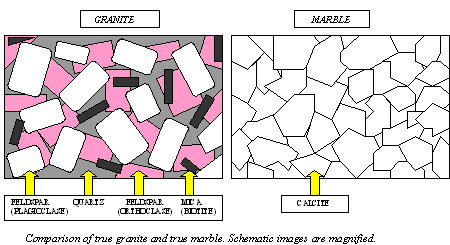
The more the quartz, the lighter the granite in color, the larger is the microcrack porosity (because of quartz volume decrease during crystalization), and so the lower is the strength, and the lower is the resistance to fire. The darker the granite, the more are the dark minerals, and the heavier is the granite. Granites are hard and not scratchable by a nail, knife, or glass piece unlike marbles. Depending on the feldspars and quartz portions, the total Mohs Hardness of granite is from 5.5 to 7. The darker the granite, the lesser is the quartz, and thus the lower is the hardness. Commercial granite is not affected by common organic acids such as a lemon acid and vinegar, contrary to marble. Commercial and Scientific MarbleMarbles in the widest commercial sense are softer natural stones than granite. The marbles are mostly polishable and they can be worked on by softer tools than those used for cutting, shaping, and polishing granite. The most important mineral is calcite. They are usually suitable for interiors.
Many stone experts separate limestones, travertines, and onyx marbles as individual groups from commercial marbles. Marbles in a narrower commercial sense are softer natural stones than granite, and more dense than limestone or travertine. Marble takes a good polish and are used for more graded purposes, mainly polished facing and flooring. Limestone in a commercial sense are less dense, with a higher water absorption than marble. They are not generally well polishable and are usually used for less graded purposes, as building stones, or honed limestone flooring. Travertine in a commercial sense are softer natural stones than granite with large pores. They can take a good polish after filling of pores and are used as building stones, flooring, and facing. Onyx in a commercial sense are softer natural stones than granite, typically with distinct color bands. They can be translucent in thin slabs. Onyxes are well polishable and used for high graded purposes like marbles. The boundary between marble and limestone in the commercial meaning are other than the boundary between marble and limestone in the scientific meaning. Marbles in the scientific sense (true marbles) are metamorphosed limestones or dolomites, they are only one group of commercial marbles (see table). Limestones in a scientific sense (true limestones) are sedimentary rocks formed especially from biogenic fragments, less from precipitation from water. Serpentine marbles are metamorphosed rocks created from a special type of igneous rocks. Dolomites (dolostones), travertines, and onyx marbles in scientific sense are sedimentary rocks formed by chemical precipitation. Commercial marbles (in the widest sense) are medium hard and scratchable by a nail, knife or glass piece unlike granite. Depending on the calcite, dolomite and serpentine portions, the total Mohs Hardness for this group is from 3 to 4. In commercial marbles, the larger pore amount, the less is the strength. In true marble or in true limestone, the larger the grain size, the lower is the strength, and the greater is the brittleness, because mineral cleavage can manifest better in larger grains. The pattern of commercial marbles is very changeable against granites. Basic property of true limestone, onyx marble, and travertine is bedding the parallel arrangement of particles (manifested in grain size, color, or shape). Especially limestones and some true marbles can be cut by veins of different directions. Many limestones contain visible fossil remnants. True marbles and onyx marbles are composed of visible calcite (aragonite, dolomite) crystals like granulated sugar. On the contrary, limestones and travertines are without markable calcite crystals or grains. Only some parts as fossils or veins can be with crystals. True marbles have grainy, cloudy, streaky, banded, wavy, brecciated (broken pieces) patterns. Commercial marbles (except of serpentinites), are affected by common organic acids such as a lemon acid and vinegar, contrary to granite. They react better with salt acid (HCl) and other common acids. Commercial marbles are not suitable for external use because acid rains (and every rains in less portion) contain acids, which decay stones. Water absortion of limestone is larger than common granite, therefore they are better destroyed by frost. Table Explanations
COMMERCIAL NAME & COUNTRY, STATE, PROVINCE COLORS
PETROGRAPHIC TYPE MAGMATIC ROCKS were formed by crystalization from magma. Many commercial granites are magmatic (igneous) rocks created some kilometers under the earths surface. These so-called plutonic rocks are composed of visible mineral grains of equal size (e.g. RUBY RED) or some grains larger than others - porphyritic structure (e.g. ROSSO SANTIAGO). There are also volcanic rocks formed from lava on the surface, but they are included in commercial stones, not in commercial granite because of their qualities. The grains in plutonic rocks are typically without orientation (e.g. BLANCO CRISTAL), but there are also oriented plutonic rocks (e.g. SOLAR WHITE, OCONEE). Part of magma so called lava crystalizes on the Earths surface as volcanic rocks. These rocks do not belong to commercial granite group because they are not well polishable and have large water absorption. Classification of plutonic magmatic rocks are based on mineral content as follows: Granite group -rich in quartz (2060%) and feldspars (K-feldspars, Na-Ca-feldspars plagioclases).
Syenite group - rich in K-feldspars with less plagioclase and quartz (up to 20%).
Diorite group - rich in plagioclase, biotite, hornblende and pyroxene. It is usually of dark-gray color.
Gabbro group - rich in plagioclase, pyroxene and olivine. It is usually of dark-gray to black colors.
Charnockite group is rich in feldspars (K-feldspars, plagioclases) with less quartz and pyroxene (e.g. CALEDONIA, VERDE UBATUBA). The rocks from this special group can be mainly compared with syenite group or granite group according to their composition of feldspars.
magmatic rocks used as commercial granites is below:
Notes:
SEDIMENTARY ROCKS. Rocks on the Earth`s surface are exposed to weathering. They are fragmented and chemically changed. Formed fragments and solutions are the most often transported by rivers to sea.
Most of the sediments are deposited in the shape of beds, which are later compacted and cemented to coherent sedimentary rocks by pressure of overlying beds and other processes (lithification). Gravel was changed to conglomerate, sand to sandstone, clay to shale, and shell acumulation to limestone. A large part of commercial marbles are limestones formed especially from anorganic remnants of organisms. Some of them were created by precipitation from fresh (travertines, onyxes) or marine water (oolitic limestones) or accumulation of limestone fragments (carbonate breccias). Some limestones were chemically alternated to dolomites (dolostones). Sandstones are also of sedimentary origin. They are not included to commercial marbles, but to commercial stones.
Limestones During lithification when pressure and temperature are raised under overlying beds, some calcite grains and fossils were dissolved and later joined by calcium carbonate cement. Pore spaces were diminished and strength was increased. In some limestones, the accumulations of siliceous materials chert nodules or layers, are created during lithification. During pressure and temperature action zig-zag lines (stylolites) are formed in some limestones caused by uneven dissolution (e.g. FILETTO ROSSO). Important factor for compact limestone origin is time and higher temperature and pressure during mountain formation. Folded and deformed limestones are usually more compacted than undeformed ones. During deformation many limestones were broken to pieces and then fissures among them were filled by calcite veinlets and veins of different orientation (e.g. ROJO CORALITO). Limestones which were uplifted close to Earth`s surface are affected by water, which dissolves limestone (and also marble) beds and caverns and cavities are formed. Cherts, stylolites and cavities are defects during limestone and marble working. Limestones are a mixture of calcium carbonate crystals of different size:
The following limestone types can be separated:
Dolomites Dolomites are usually harder, heavier and more brittle and appear more fractured than limestones (e. g. dolomite breccias MARRON EMPERADOR). There are transitions from limestone to dolomite:
METAMORPHIC ROCKS were formed by the recrystalization of sedimentary or magmatic rocks under the Earths surface during raised pressure and temperature conditions, from low to high grade metamorphism. Metamorphism follows lithification in higher temperature and pressure. Transition between lithification and metamorphism is in 100 200 ºC span. The appearance of new minerals is a substancial feature of metamorphism. Mainly high metamorphic rocks such as Gneisses belong to commercial granite. Commercial Slates are metamorphic rocks exposed to low metamorphism. True marbles, serpentine marbles and serpentinites of the metamorphic origin are commercial marbles. Gneiss group contains rocks with high pressure and high temperature metamorphism, which have strongly oriented, streaked (schlieren), banded, and wavy structures such as paragneisses, orthogneisses, garnet gneisses, migmatites and granulites. Migmatites and granulites are added to gneiss group only because of their similar structures. Streaks, bands or waves are usually created of darker minerals the most frequently of dark mica (JUPARANA CLASSICO and other JUPARANAS). Bands and rings of rusty color in some stones are the result of weathering, when hot surface water in a tropical climate penetrates to the rock and alternates minerals with iron content (e.g. GOLDEN WAVE, JUPARANA CASABLANCA). Gneiss Group
Metagabbros (e.g. LAKE SUPERIOR GREEN) are weakly metamorphosed gabbros magmatic rocks with green color caused by chlorite. Metaconglomerates (e.g. VERDE MARINACE) are formed by metamorphism of conglomerates - sedimentary rocks composed of rounded grains over 2 mm (4 mm in Europe). Quartzites are almost exclusively composed of quartz, metamorphosed from quartz sandstones (e.g. AZUL MACAUBAS). They are sometimes separated as an individual commercial stone group, when they are not polishable and splited as slates.
Marbles (in petrographic sense, true marbles) Patterns can be homogenous (THASSOS WHITE), banded (MAKRANA DOONGARI), streaked (VOLAKAS), veined (GRIGIO CARNICO), brecciated (ARABESCATO), or cloudy (NUVOLATO APUANO). The larger the crystals, the less the strength, and the more brittle are marbles. Dolomite marbles are usually harder, heavier, more brittle, less polishable and with a higher water absorption than limestone marbles. Dolomite mineral is more resistant against acids than calcite.
Serpentinites
Serpentine marbles (ophicalcites)
GEOLOGICAL AGE The basic geological periods with their ages are:
WATER ABSORPTION BY WEIGHT
OTHER NAMES AND VARIETIES
SIMILAR STONES
BASIS OF NAME The color is described in English, Italian, Spanish, or other languages. Some stones have their names according to colors of precious stones, plants, or animals. Term Explanations
Al Aluminium Most Important ReferencesAcae, Acagorcian Z. A. et al.: Oblicovochnye Kamni Sovetskogo Sojuza - Aiastan, Adenwala Marbles Pvt. Ltd., Adnan Aygun Mermer Ltd., Adolfo Forti SpA, Aksoylar Mermer Co, Albion Stone Quarries Ltd., Alicante Brazilian Granites Export, Allied Supply, Alpay Mermer, Alpha Intellekt Service, Alwaystone, Apostoli Marmi, Artstone, Assocave, Associação Brasileira da Indústria de Rochas Ornamentais, Associação Brasil-Ucrânia, Athenian Marble Ltd., Atlanta Marble Co., Inc., Avalon Stone Products Inc., Azorin y Paya Ltd., Balduini Marmi, Barracuda Granite Tiles, Baustoffsammlung der Fakultät für Architektur der TU München, Best Stone, B.H.B. sro, BIECO Stone Co.,Ltd, Bradley F.: Natural stone. A Guide to Selection. Studio Marmo, Brechal - Mármores e Brechas do Algarve SA, BRE Projects.bre.co.uk, Bresciana Marmi Spa, Breton Spa, Brocco Graniti, Cameli Marmi, Canadian Stone Association, Cannone Marmi, Carli Cav. Oreste & C. SAS, Cave Vianini Srl, CDOS: Stones of India, Cekicler Marble Co, Cella Marmi, Cereser Marmi SpA, Champlain Marble Company, Chariot International Pvt. Ltd., China Granite, Chicopee Mason Supplies, Cold Spring Granite Inc., Col-marmi Srl, Commerce sro, Consorcio Produttori Marmo Botticino Classico, Cored Trading, Cosentina Marmi, Cosmo Marble S.A., Craglia Marmi, Crystal Granite & Marble Ltd., Cuellar Stone, Cutting Edge Tile and Marble Corp., Dakota Granite, Dan Marble, Decorate in Detail, Deer Isle Granite Co., Department of Mines and Geology Rajasthan, Dermitzakis Greek White Marble, Die Internationale Naturwerksteinkartei, El Batal Marble and Granite Co., Elberton Granite Association Inc., Elce Marmi, EMCO Emdad Mineral Corporation, Enobras.com, EST France, Euroferman Marbles & Granites International, Eurofo Co., Euroroca SA, Eurostone Marble and Granite, Inc., Everything & More, Fabulous International Group Corporation, Faculdade de Arquitectura da Universidade Técnica de Lisboa, Federatie van de Belgische Natuursteengroothandelaars, Felekis Marble, Felice Chiro Industria Marmi Srl, Fenix VP sro, F.H.L. Kiriakidis Group, Finnish Natural Stone Association, Finska Steinindustri Ab, Fletcher Granite Co., F.lli Mattei Marmi Srl, F.lli Salvatore, Foredi Marmi, Fosenstein As, Freejack Bros, Gam-Robert Ceramic Tile, Inc., Gem Granites, Geophysics at Rensselaer Home Page, Geowissenschaftlicher Dienst O.O. Dillmann, Gextrais Inc., GMC Spa, Gourlis Group Marble Enterprises, Granicor, Granital Siena Srl, Granite Warehouse, Graniti Conrad Srl, Graniti Fiandre, Granit Ltd., Granitos Artemármol, Granitos de Bajadoz SA, Granitos Rosa Valencia, Grupo San Marino, Guida tecnica per l`impero razionale del marmo. A cura dell industria Italiana del marmo Rizzoli grafica, Guinet-Derriaz, HAI Industriedienst GmbH, HAMO d.o.o., Hatzis Marble, Hong Kong New Guangyan Co., Ltd., ICONS 2000, IMMIB, Indiana Geological Survey, Indiana Limestone Institute of America, Industrial Stones Italy Srl, Industrie Caucci, Instituto Geologico e Mineiro de Portugal, International Centre for Advancement of Manufacturing Technology, International Co. for Marble and Granite, Interock Oy, IPEK Natursteine, Janotas and Simoes Ltd., Jerusalem Stone, JerUSAlem Stone, Jose A. Garcia Moya Sl, Juramarmor und Solnhofener Natursteinplatten, Kamen Pazin, Kar-mer Co. Ltd., Kartas Marble SA, Kelgran Ltd., KLH Trading and Supplies, Kocak Natural Stone Group, Komi Turkish Marbles and Granite and Tile, Landi Giocondo & C. Srl, Larvik Granite As, Levantina Natural Stone, Listagranit SA, Lunamar Marble and Stone, Lundhs Labrador As, Marble and Stone Expo, Marbleguide, Marbleinfoline.com, Marblenet Sl, Marbres i Granits Rius, Marcel Lauber, Marcolini Marmi, Marfilpe - Mármores e Granitos, Lda., Margraf Spa, Marmifera Irpina Srl, Marmi Lanza Spa, Marmi Orosei, Marmi Pellegrini, Marmi Scartabelli, Marmo Apricena.com, Marmol Azul Cielo Argentina, Marmol Compac, Marmores Ramalhosa, Marmorexport Ltda., Masselli Marmi, Max-Balz GmbH, Mineralszone.com, Ministre des Ressources naturelles, de la Faune et des Parcs: Localization of producing mines, architectural stone quarries and peat bogs in Quebec, Ministry of Northern Development and Mines Ontario, MKK Holding, Modul, Mondo Marmi, Inc., Müller F.: INSK Kompakt, National Building Granite Quarries Association Inc., NatursteinNet.de, Naturstein Zimmer, Natursteinwerk Lenk GmbH, Nelson Granite Ltd., Nemer SA, NGI Natursteincenter Berlin GmbH., New England Stone, Nomad Energy Ltd., North Carolina Granite Corp., Norwegian Rose AS, Nuova Isorno Graniti Srl, Palestinian Union of Stone and Marble Industry, Palin Granit Oy, Pardal Monteiro Marmores, Paulino`s Marmoraria, PC Bangur Minerals Ltd., Peltsman Corporation, Perazzo P.B.- Perazzo G.P.: Stone Quarries and Beyond. Webmaster California, Peval SA, Pierres et Marbres de Wallonie, Pietra della Lessinia s.n.c., Pittsburg State University: Elephant Rocks State Park, Pivko D.: Natural Stones in Earths History. Acta Geol. Univ. Comen., Polistone Apuana s.r.l., Polycor Quarry Division, Polystone Co., Ltd., Primary Industries and Resources SA, Pro Naturstein, PS Craftmanship, Purbeck Stone Haysoms and Landers Quarries, Querciolaie Rinascente, Rinser Natursteinwerk, Robs Granite Page, Rock of Ages, Roc Maquina Sl, Rinser Natursteinwerk, Robs Granite Page, Rochas Ornamentais Portuguesas, Romanense de Marmoles, Salvini Marmi, Savema Group Spa, Sayakci Marbles, Semap Group, Semenchenko Yu. V. et al.: Tzvetnye Kamni Ukrainy - Budivelhnik, Shalom Granites Bangalore, SIAL Concern, Sigma Corporation, Siskos Group, Slezsky kamen, Sociedade Marmifera Brasileira Ltda, Societa del travertino Romano, Solnhofen Stone, South Texas Stone Co., SP Ace Enterprises, SSH Design, Stilmarmo Srl, StoneInfo.Com, Stone Quarries and Beyond, Stone-Sales.com, Stone Selection, Stone Showcase CC, Stones of India CDOS, Taivassalon Graniitti Oy, Tamponi Paolo - Marmi e Graniti di Sardegna, Tekmar Mermer, Temmer Mermer, Tendenza Marmoles y Granitos, Tennessee Marble Co., Thassos Marble, Transgranitos - Mármores e Granitos do Alto Tâmega Lda., Trivedi Marbles, Turkisk Sten HB., turkishmarble.com, Union Granit AB, Union Trade Marble, Universidade do Estado do Rio de Janeiro, Universidade Federal do Rio de Janeiro: Projeto MultiMin, University of Tennessee at Chattanooga, University of Wisconsin Madison: Igneous Rocks, University of Wisconsin Milwaukee: Rock Description Page, USGS National Geologic Map Database, U. S. Marble, US - Mexican Development Corporation, Vaben SIA, Volakas Marble, Windavar Co. Ltd., Wesleyan University, Winkler E. M.: Stone in Architecture. Springer Verlag, World Wide Stone Corp., Xiamen Jiangshi Imp & Exp Co, Ltd., Ylamaan Graniitti Oy. Thanks belongs to Vinay Somani from India and Maurizio Bertoli from USA for their comments and advices, to Prof. Milan Misik from Bratislava, who filled me with enthusiasm for the topic, to my wife for family wellbeing, and God for all.
The Worlds MOST POPULAR GRANITE
The Worlds MOST POPULAR MARBLE
AND here's where you'll find the most popular American & Canadian Granite And Marble
Return from Most Popular Marble And Granite to Natural Stone Interiors Home |
The Worlds MOST POPULAR GRANITE
The Worlds MOST POPULAR MARBLE
MOST POPULAR American & Canadian Marble & Granite
|
||||||||||||||||||||||||||||||||||||||||||||||||||||||||||||||||||||||||||||||||||||||||||||||||
|
|
|||||||||||||||||||||||||||||||||||||||||||||||||||||||||||||||||||||||||||||||||||||||||||||||||
|
Top Of Page | Home Page | What's New | Free Estimates | Site Map | Privacy Policy | Advertising | Contact Us | | |||||||||||||||||||||||||||||||||||||||||||||||||||||||||||||||||||||||||||||||||||||||||||||||||
|
Copyright © 2005 - 2015 Natural-Stone-Interiors.com - All Rights Reserved.
|
|||||||||||||||||||||||||||||||||||||||||||||||||||||||||||||||||||||||||||||||||||||||||||||||||
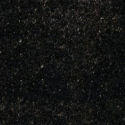
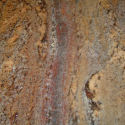
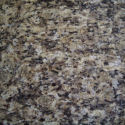
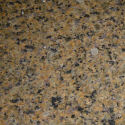
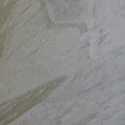
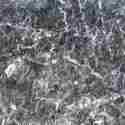
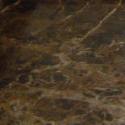
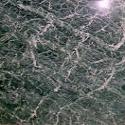
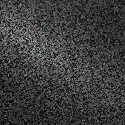

 Daniel Pivko was born in 1962 in Slovakia, part of former Czechoslovakia in central Europe. He finished Comenius University in 1986.
After 5 years as a mapping geologist in Geological survey, he teaches Physical geology in Comenius University, Department of Geology and
Paleontology, Faculty of Natural Sciences, Bratislava, Slovakia. He is married and has three children. He published articles and books
in sedimentology, natural stones, didactics of geology and science vs. Christian religion relations. In the last seven years he intensively
dedicates to research of petrography and geology of natural stones. He acts as a expert in Advice wanted in FindStone Internet Limited. He
created and published databases of the uses of marble and granite.
Daniel Pivko was born in 1962 in Slovakia, part of former Czechoslovakia in central Europe. He finished Comenius University in 1986.
After 5 years as a mapping geologist in Geological survey, he teaches Physical geology in Comenius University, Department of Geology and
Paleontology, Faculty of Natural Sciences, Bratislava, Slovakia. He is married and has three children. He published articles and books
in sedimentology, natural stones, didactics of geology and science vs. Christian religion relations. In the last seven years he intensively
dedicates to research of petrography and geology of natural stones. He acts as a expert in Advice wanted in FindStone Internet Limited. He
created and published databases of the uses of marble and granite.